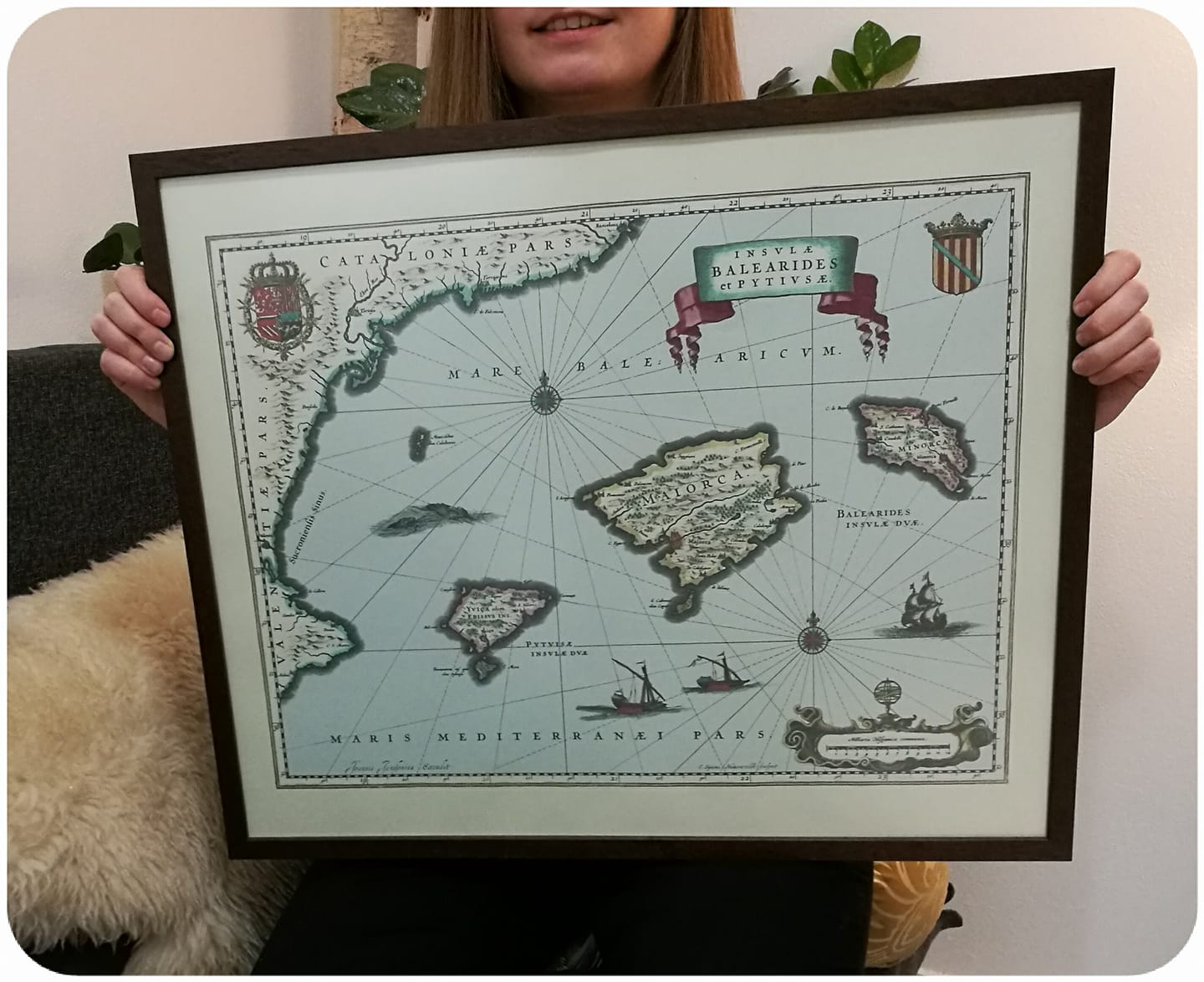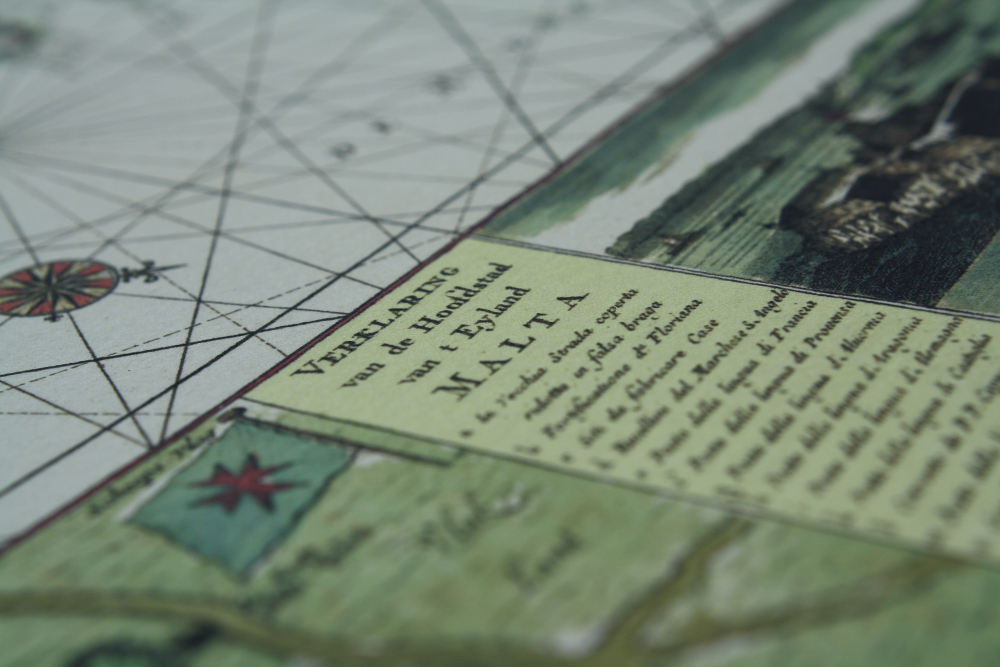No products
ABOUT THE PRODUCTS
MAP REPRINTS
Old maps and handmade paper simply go together. Today’s handmade paper production uses the same technology
on which maps and other documents were printed in previous centuries and, thus, gives each and every map reprint
a quality that is hugely valued today: authenticity. We believe that they make an excellent feature that can adorn
every sophisticated interior.
Read more about our maps, and the material and printing technique we use:
Our Uniqueness
What sets us apart from other shops offering reproductions of ancient originals? Firstly, it is the material: other
companies print on modern paper made from cellulose meaning that the authenticity of the reproduction is lost.
We use high quality handmade paper sheets made manually in a small warehouse in the Czech Republic; the
very same material used to print the original maps centuries ago. Secondly, we check all of our maps and remove
any distracting soiling and stains that the original map has accumulated over the centuries. Only the minimum
of soiling is kept to retain authenticity. The result is a wonderful map reproduced on authentic material – the
perfect combination.
Map Selection
Our maps are selected with care and interest. In our collection, we prefer to cover places around the World that are
either popular tourist destinations that we believe stand out for their genius loci or, more often, we choose maps that
we simply consider to be especially beautiful pieces. Maps of continents, the whole World, and ancient celestial charts
are also included. Maps originating from the 16th to early 20th centuries are available in our catalogue. We update our
selection with new maps every month. If you can’t find your favourite location in our existing map selection then just
let us know and we will do our best to track it down. The original maps are refined so they are more presentable; no
major soiling, tears, or stains on the original documents are printed on the reproductions. However, to keep the maps
authentic, so they reflect their years, some minor soiling or stains are kept on the reproductions.
Map with a Story
Maps can be story-telling beauties indeed. Step by step, we add a short story to every map because we believe it is
the best way of introducing a place in its historical context. The story is often based on the location covered by the
map and the time the particular map was first printed. Sometimes, the theme is less restricted to the time of
the original map printing. Notable residents of the place are often introduced. Recommendations for novels,
travelogues or other non-fiction books are added to some maps to provide you with the opportunity to learn more
about the particular location. Please note that we want our maps to be perceived simply as a selection of aesthetic
wonders. We have no intention of emphasising any religion or political orientation with our selection of maps or
stories. As such, this shop is and always will be strictly apolitical.
Handmade Paper
We use handmade paper produced based on the original formula for hand papermaking that has been used since
the 16th century. Unlike modern paper made of cellulose, our handmade paper is made of a mixture of cotton and
linen. It is very thick; the standard weight is 200g per m2. The paper is made in a small manufacturing plant in
the Czech Republic. Read more about handmade paper's history, technology and current use here.
Printing
The map posters are not kept in stock; each map is printed based on your order.
An archival print is used for all of our map reproductions. We use a modern inkjet printer for printing with high-quality
toners to make sure the colours are bright and long-lasting, even when permanently exposed to daylight. The printed
margins between the end of the map (frame) and the end of the printed area is a minimum of 2 cm / 0.8 inches. This
margin ensures that the map can be comfortably framed. The margins between the end of the printed area and the paper’s
edge differ according to the specific map proportions. We make sure every single map is a high-resolution print. We offer
two or three print sizes, which ensures we meet the high-resolution standard. However, please note that handmade paper
is a special medium with a very specific texture. The paper is naturally bumpy, just like in the old times. This is the type
of surface that we believe best suits antique map reproductions. Please do not expect a smooth and glossy surface such
as with a photograph, as this is not the medium we use for our prints.
Image source: Kobeica
Image source: Kobeica
Frames
The map reproductions can be ordered as a print only or as a framed poster. Our frames are made of wood and we offer three
different colours to choose from. Click here for detailed information about the frames we use.

Customer service
Gift wrapping: is your map a wedding or anniversary present? Let us know! We will gift wrap it for you, free of charge.
Size: If you require a different size print to our preset options, please let us know.
Material: The handmade paper is a unique material that makes the map reproductions an authentic item. However, this paper
making technology sets clear limits as it comes to the size of the paper sheet. If you wish to have a larger map poster, please
contact us, we can make a bespoke order.
Property Rights
The original maps are either part of our private collection or electronic copies that have been acquired from various institutions
such as museums or libraries. In the latter case, the acquired files were listed as “public domain” according to the Open Access
classification. Written confirmation of this status has been given by the relevant institutions. The "public domain" status means
that the documents have been identified as being free of known restrictions under copyright law, including all related and
neighbouring rights. The documents displayed on the Kobeica website remain in the public domain, although the acquired
electronic files have been modified by our staff in order to erase major dirt and stains. Enjoy the beauty of our antique maps with us!
THEMED DECOR
Raku Pottery
Beside map reproductions, we offer other home decor products that can be associated with or are inspired by a country or a region though
its theme or method of production. Raku ware is one of these. It is made using a traditional pottery making technique. Raku means
“enjoyment”, “comfort” or “ease” and has been used in Japanese tea ceremonies and later became a popular technique in America and
Europe. The products we offer are made by a Western-style raku ware using a special horse-hair method. The ceramic products are made
by Mr. Michal Plíhal, a leading raku artist in the Czech Republic.
Hacuboku Cushion Covers
Beside map reproductions, we offer other home decor products that can be associated with or are inspired by a country or a region though
its theme or method of production. Hacuboku cushion covers are designed based on an inspiration by traditional Japanese hatsuboku –
an ink based painting technique. They are designed and produced by Hacuboku, an artist and designer based in the Czech Republic.

Image source: hacuboku
Buckwheat-Filled Cushions
We have designed a set of six square-shaped maps from our selection to use in the design of our buckwheat-filled cushions. These can be
purchased separately or as a set of six. They are made from 100% cotton and can be heated in a microwave and used as a natural warmer.
The cushions are ideal for children’s rooms, for holiday homes, cottages, balconies and terraces.




